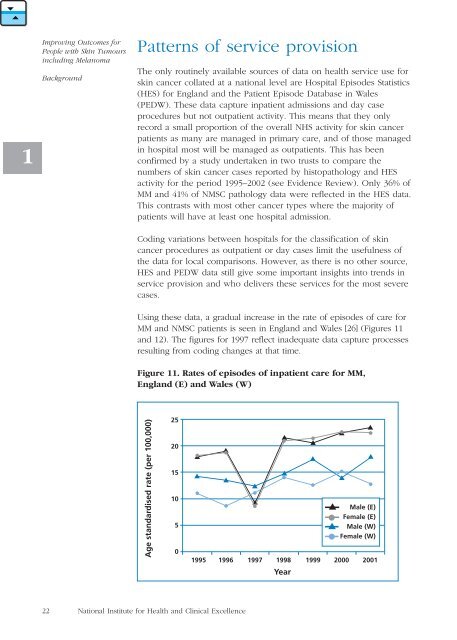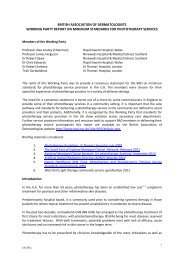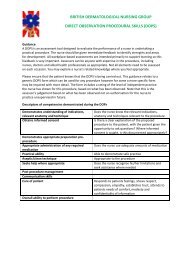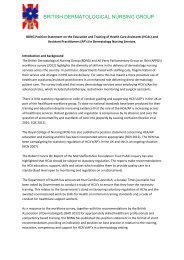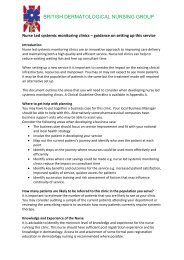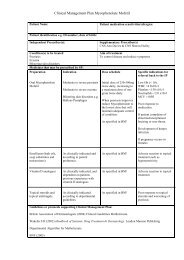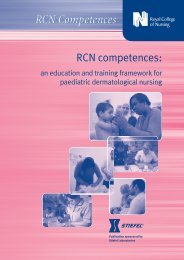Improving outcomes for people with skin tumours including melanoma
Improving outcomes for people with skin tumours including melanoma
Improving outcomes for people with skin tumours including melanoma
You also want an ePaper? Increase the reach of your titles
YUMPU automatically turns print PDFs into web optimized ePapers that Google loves.
1<br />
<strong>Improving</strong> Outcomes <strong>for</strong><br />
People <strong>with</strong> Skin Tumours<br />
<strong>including</strong> Melanoma<br />
Background<br />
Patterns of service provision<br />
The only routinely available sources of data on health service use <strong>for</strong><br />
<strong>skin</strong> cancer collated at a national level are Hospital Episodes Statistics<br />
(HES) <strong>for</strong> England and the Patient Episode Database in Wales<br />
(PEDW). These data capture inpatient admissions and day case<br />
procedures but not outpatient activity. This means that they only<br />
record a small proportion of the overall NHS activity <strong>for</strong> <strong>skin</strong> cancer<br />
patients as many are managed in primary care, and of those managed<br />
in hospital most will be managed as outpatients. This has been<br />
confirmed by a study undertaken in two trusts to compare the<br />
numbers of <strong>skin</strong> cancer cases reported by histopathology and HES<br />
activity <strong>for</strong> the period 1995–2002 (see Evidence Review). Only 36% of<br />
MM and 41% of NMSC pathology data were reflected in the HES data.<br />
This contrasts <strong>with</strong> most other cancer types where the majority of<br />
patients will have at least one hospital admission.<br />
Coding variations between hospitals <strong>for</strong> the classification of <strong>skin</strong><br />
cancer procedures as outpatient or day cases limit the usefulness of<br />
the data <strong>for</strong> local comparisons. However, as there is no other source,<br />
HES and PEDW data still give some important insights into trends in<br />
service provision and who delivers these services <strong>for</strong> the most severe<br />
cases.<br />
Using these data, a gradual increase in the rate of episodes of care <strong>for</strong><br />
MM and NMSC patients is seen in England and Wales [26] (Figures 11<br />
and 12). The figures <strong>for</strong> 1997 reflect inadequate data capture processes<br />
resulting from coding changes at that time.<br />
Figure 11. Rates of episodes of inpatient care <strong>for</strong> MM,<br />
England (E) and Wales (W)<br />
Age standardised rate (per 100,000)<br />
25<br />
20<br />
15<br />
10<br />
5<br />
0<br />
▲•<br />
▲<br />
•<br />
▲•<br />
▲<br />
•<br />
▲<br />
•<br />
▲<br />
•<br />
▲<br />
• ▲•<br />
▲<br />
•<br />
1995 1996 1997 1998 1999 2000 2001<br />
Year<br />
▲<br />
•<br />
Male (E)<br />
Female (E)<br />
Male (W)<br />
•<br />
Female (W)<br />
• ▲<br />
▲<br />
•<br />
▲<br />
▲<br />
▲• •<br />
▲<br />
•<br />
22 National Institute <strong>for</strong> Health and Clinical Excellence


